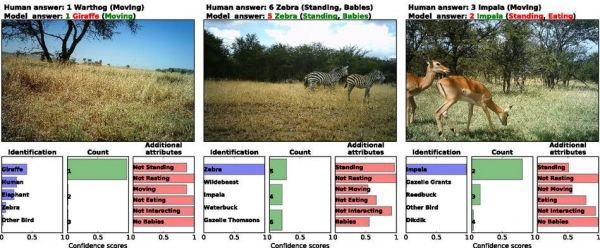Motion-sensor cameras are increasingly being used to track wildlife across the globe, from tigers in India to aardvarks in Africa. But combing through the millions of images captured by these systems is a time-consuming task. Now, scientists have discovered that artificial intelligence is as effective as human volunteers — and much faster — at identifying species in these largely untapped photo repositories.
In a new study published this week in the Proceedings of the National Academy of Sciences, a team of researchers, led by computer scientist Mohammad Sadegh Norouzzadeh at the University of Wyoming, tested whether a type of artificial intelligence called deep neural networks could correctly identify and count species, determine animals’ ages, and classify their behaviors. They analyzed AI’s capabilities using 3.2 million images from the Snapshot Serengeti dataset, which contains photos from 225 camera traps in Tanzania’s Serengeti National Park since 2011.
Read more at Yale Environment 360
Image: The artificial intelligence system's analysis of species type and count, as well as the animals' behaviors, of camera trap images taken in Serengeti National Park. CREDIT: NOROUZZADEH ET AL, PNAS 2018


